
Elena & Michele
Elena & Michele
Cultural Insights
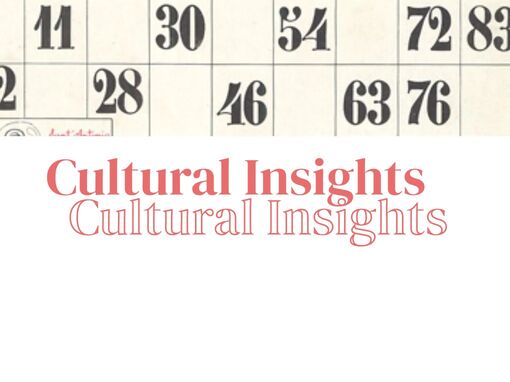
Among our diverse family and friends, we hope that understanding even a few key expressions can bridge gaps and cultivate meaningful connections.
In this page, we'll try to provide some insights into various phrases and words from different languages to help you engage with others from around the globe.
Italian Words & Phrases
Below are a few of our basic vocabulary in all languages that may be useful for the ceremony.
Salutations
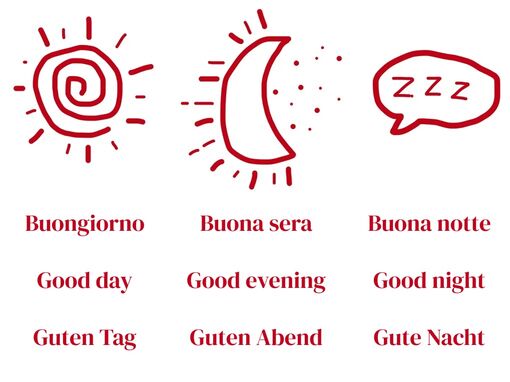
Common phrases

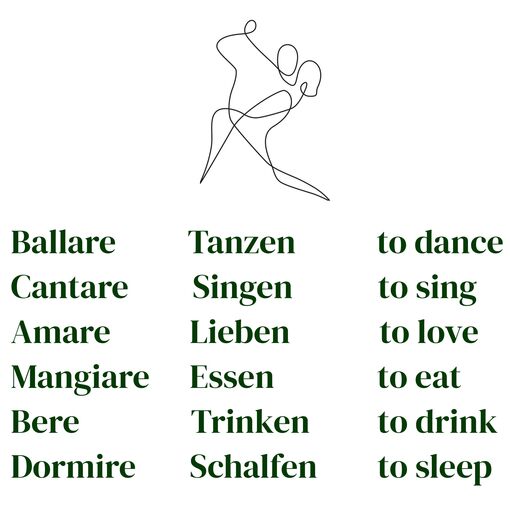
Beverages

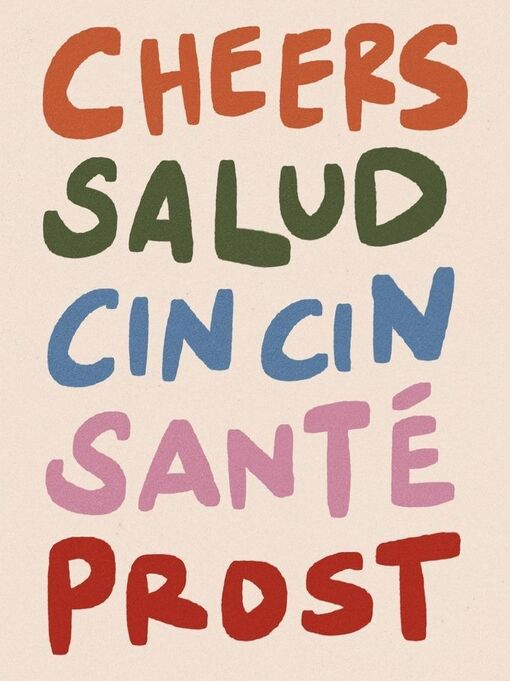
Journey into the linguistic nuances of Naples

Did you know Neapolitan is a separate language, not just a dialect of Italian? At the heart of the Neapolitan language lies a fascinating world of unique expressions, a true cultural treasure that defines the identity of Naples. Here are some Neapolitan sayings you may hear if you come to Naples.
"A mangià jamm bell e a durmì nisciun ce passa"

Francesco Clemente, "Ave Ovo", 2005,
Museo Madre in Naples.
"‘E chiacchiere s' ‘e pporta ‘o viento; ‘e maccarune jengheno ‘a panza"

Andy Warhol, "Vesuvius", 1985
"Ommo 'e panza, Ommo 'e sostanza"
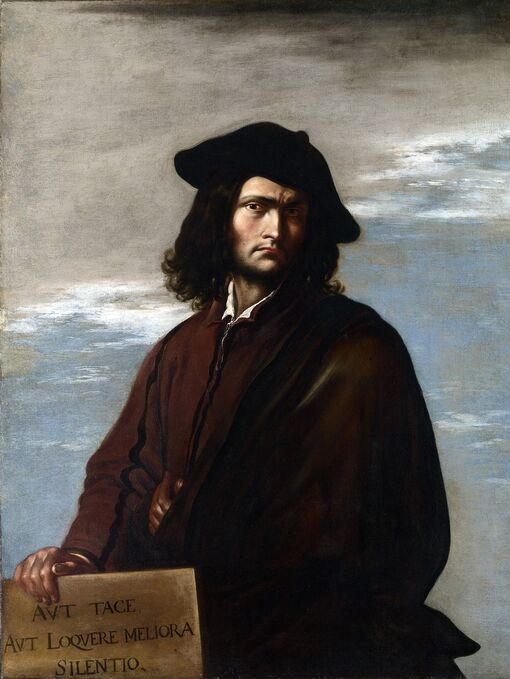
Salvator Rosa, Philosophy, c. 1645
"Facite ammuina"

Anton Sminck van Pitloo, “Castel dell’Ovo from the beach” (c. 1820-1824)
"Chest'è / Che vuo' fa'"

Brett Lloyd from "Napoli Napoli Napoli".
Neapolitan Gestures
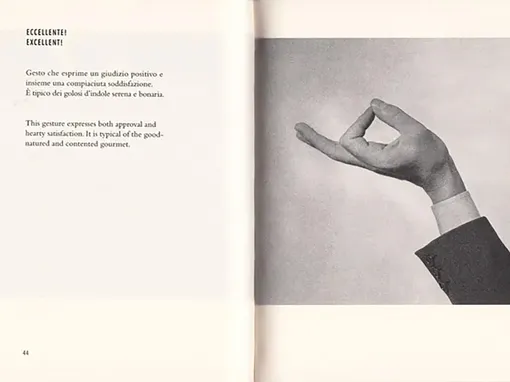
Bruno Munari from "Speak Italian: The Fine Art of the Gesture".
Whether born of the necessity to persuade crowds in Ancient Rome, or to be able to understand one another during times of foreign occupation—or even to compete for attention in a densely populated city—the bottom line is indisputable: Italians have been using gestures to communicate for centuries.
The philosopher Marcus Tullius Cicero (106 BC–43 BC) believed that in order to deliver a speech of excellent quality, the message should be accompanied by “movement of the body”, using “gestures, facial expression, and varying the inflection of the voice.”
In modern times, Italian journalist Luigi Barzini describes the best gestures as being “economical” and so subtle as to be almost imperceptible.
“La mimica degli antichi investigata nel gestire napoletano” or “The Ancients’ Mimic Through the Neapolitan Gestures” was the first collection of gestures written by the Neapolitan-born archeologist Andrea de Jorio (1769-1851) in 1832. He wrote an entire volume on the science of bodily expression, and the connection between contemporary gestures observed on the streets of Naples, and similar gestures uncovered by ancient frescoes and the excavations of Pompeii and Herculaneum.
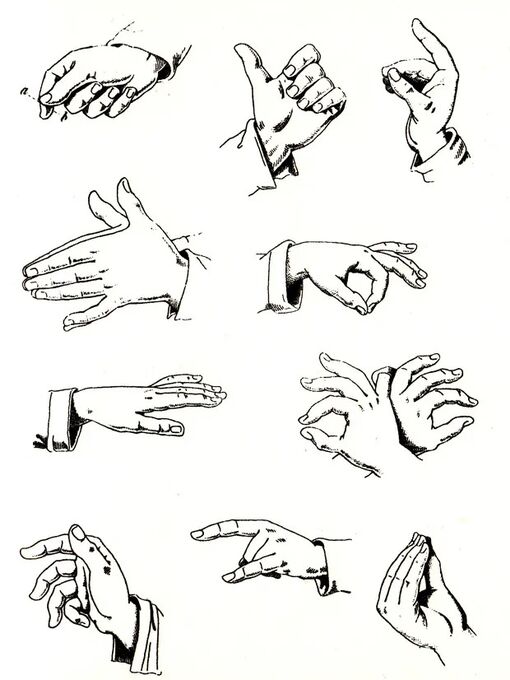
From left to right: money, past times, affirmation, stupid, good, wait a moment, to walk backward, to steal, horns, to ask for.
Funny scenes featuring gestures
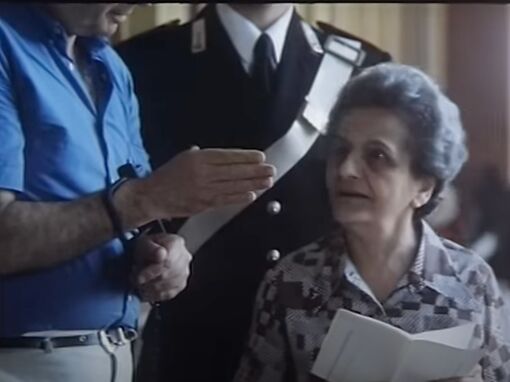
Così parlò Bellavista (1984) – Informazioni
“Così parlò Bellavista” is a 1984 Italian comedy film based on the novel of the same name by Luciano De Crescenzo. De Crescenzo directed the film and also played the main role.
In this famous scene, a man who is awaiting his trial at the town hall in handcuffs manages to direct an elderly woman to her destination.

Comedian and educator John Peter Sloan humorously learns about Italian body language on his way to the country.
Canzone Napoletana
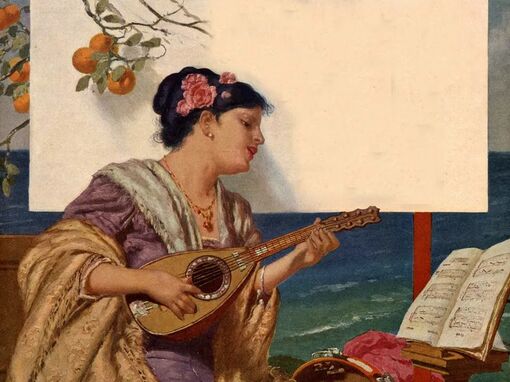
Canzone Napoletana refers to a genre of traditional Italian music originating from Naples. It is characterized by its heartfelt and emotional lyrics, often centered around themes of love, loss, and longing. The melodies are typically simple yet melodic, allowing the focus to be on the expressive vocals.
Canzone Napoletana has a rich history dating back centuries and has been passed down through generations, becoming an integral part of Italian cultural heritage. The music is typically accompanied by instruments such as the guitar, mandolin, and accordion, creating a warm and intimate atmosphere that captures the essence of Neapolitan life and emotions.
In recent years, Canzone Napoletana has experienced a resurgence in popularity, with contemporary artists putting a modern twist on this traditional genre. While still rooted in the classic themes of love and nostalgia, newer Neapolitan songs often incorporate elements of pop, rock, and even electronic music, appealing to a younger audience while still preserving the essence of the original style.
Set in the region

Naples is known for its rich history of storytelling. Here you can see a few of our favorite stories in the region.
Books
• La Smorfia napoletana is used to interpret dreams to draw suggestions on winning numbers to play the lottery
• Thus Spake Bellavista (Così parlò Bellavista) (1989) by Luciano De Crescenzo
• The Volcano Lover (1992) by Susan Sontag
• God's Mountain (2002) by Erri De Luca
• Pompeii: The Life of a Roman Town (2008) by Maria Beard
• My Brilliant Friend (2011) by Elena Ferrante
TV & Films
• Poverty and Nobility (1954) featuring Totò stuffing his pockets with spaghetti
• It Started in Naples (1960) featuring Sophia Loren
• The Talented Mr. Ripley (1999) a physiological thriller set in the 1950s – or Ripley (2024) also based on the book
• Gomorrah (2008) based on the non-fiction book of the same name by Roberto Saviano
• Passione (2010) that guides through Naples’ rich musical heritage
• Anthony Bourdain's "No Reservations" Season 7, Episode 11 (2011) where they crash a Neapolitan wedding
• Caffè Sospeso (2017) on which coffee the Pope drank when he visited Naples and the suspended coffee – the advance purchase of a cup of coffee for someone else.
• The Hand of God (2021) by Paolo Sorrentino
• Mixed by Erry (2023) by Sydney Sibilia